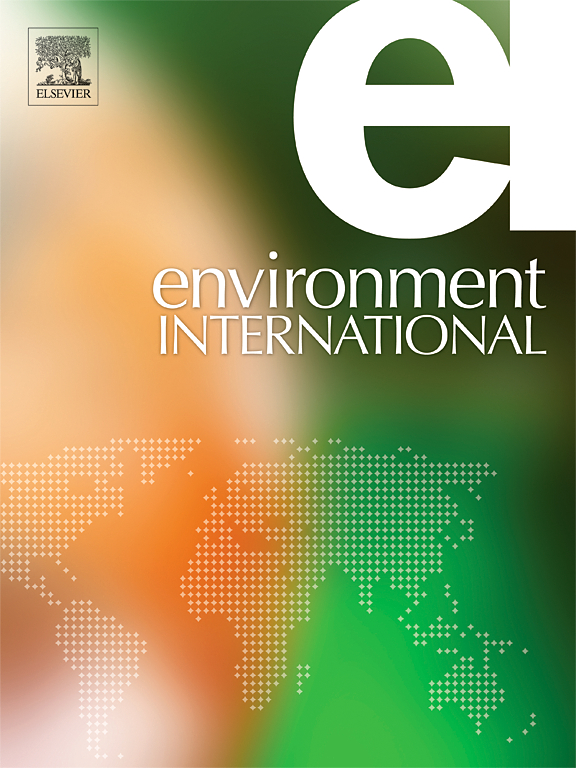Enhancing 72-Hour air quality forecasting with an observation-driven deep learning chemistry transport model
IF 10.3
1区 环境科学与生态学
Q1 ENVIRONMENTAL SCIENCES
引用次数: 0
Abstract
Real-time air quality forecasting with atmospheric chemistry transport models (CTMs) has long been hindered by the inaccessibility of in-time updates for crucial inputs (e.g., emissions) and chemical mechanism, posing a significant obstacle to designing effective control strategies for protecting human health. Here we present a study that leveraging multiple observations combined with corresponding meteorological conditions to overcome these long-standing limitations in high-resolution air quality forecasting. Specifically, we developed a novel observation-driven deep learning-based atmospheric chemistry forecasting (DeepFC), which effectively integrates abundant near-real-time satellite and ground-based observations. Using a nine-year observation dataset (2013–2021) with CTM simulation training over a 27 km × 27 km resolution domain in China, DeepFC driven entirely by observations significantly improves the accuracy of traditional numerical models in forecasting the concentrations of two major pollutants, PM2.5 and O3, for the following 72 h across the country. Specifically, it enhances R2 from 0.2 to 0.6 and reduces RMSE by 50 % for PM2.5 and 20 % for O3, primarily due to the effective of fusing historical observation data and a more effective prediction strategy. Moreover, the newly developed observation-driven DeepFC provides deep insights into key factors for effective policy design, including source-receptor relationships, emission-response dynamics, and the separation of meteorology- and emission-driven variations. While consistent with traditional CTMs, DeepFC achieves these insights with significantly greater efficiency. These results highlight its strong potential in supporting global efforts to combat air pollution for better protection of human health and ecosystem.


利用观测驱动的深度学习化学传输模型增强72小时空气质量预报
长期以来,由于无法获得关键投入(例如排放)和化学机制的及时更新,利用大气化学输送模型进行实时空气质量预报一直受到阻碍,这对设计保护人类健康的有效控制战略构成了重大障碍。在这里,我们提出了一项研究,利用多个观测结合相应的气象条件来克服这些长期存在的高分辨率空气质量预测的局限性。具体来说,我们开发了一种新的基于观测驱动的深度学习的大气化学预测(DeepFC),它有效地整合了丰富的近实时卫星和地面观测数据。利用中国27 km × 27 km分辨率域的9年观测数据集(2013-2021年)和CTM模拟训练,完全由观测驱动的DeepFC显著提高了传统数值模式在未来72 h内对PM2.5和O3两种主要污染物浓度的预测精度。具体来说,它将PM2.5的R2从0.2提高到0.6,将PM2.5的RMSE降低了50 %,将O3的RMSE降低了20 %,这主要是由于融合历史观测数据和更有效的预测策略的有效性。此外,新开发的观测驱动的DeepFC提供了对有效政策设计的关键因素的深入见解,包括源-受体关系、排放-响应动力学以及气象和排放驱动变化的分离。虽然与传统CTMs一致,但DeepFC以更高的效率获得这些见解。这些结果突出了它在支持全球防治空气污染努力以更好地保护人类健康和生态系统方面的巨大潜力。
本文章由计算机程序翻译,如有差异,请以英文原文为准。
求助全文
约1分钟内获得全文
求助全文
来源期刊

Environment International
环境科学-环境科学
CiteScore
21.90
自引率
3.40%
发文量
734
审稿时长
2.8 months
期刊介绍:
Environmental Health publishes manuscripts focusing on critical aspects of environmental and occupational medicine, including studies in toxicology and epidemiology, to illuminate the human health implications of exposure to environmental hazards. The journal adopts an open-access model and practices open peer review.
It caters to scientists and practitioners across all environmental science domains, directly or indirectly impacting human health and well-being. With a commitment to enhancing the prevention of environmentally-related health risks, Environmental Health serves as a public health journal for the community and scientists engaged in matters of public health significance concerning the environment.
 求助内容:
求助内容: 应助结果提醒方式:
应助结果提醒方式:


